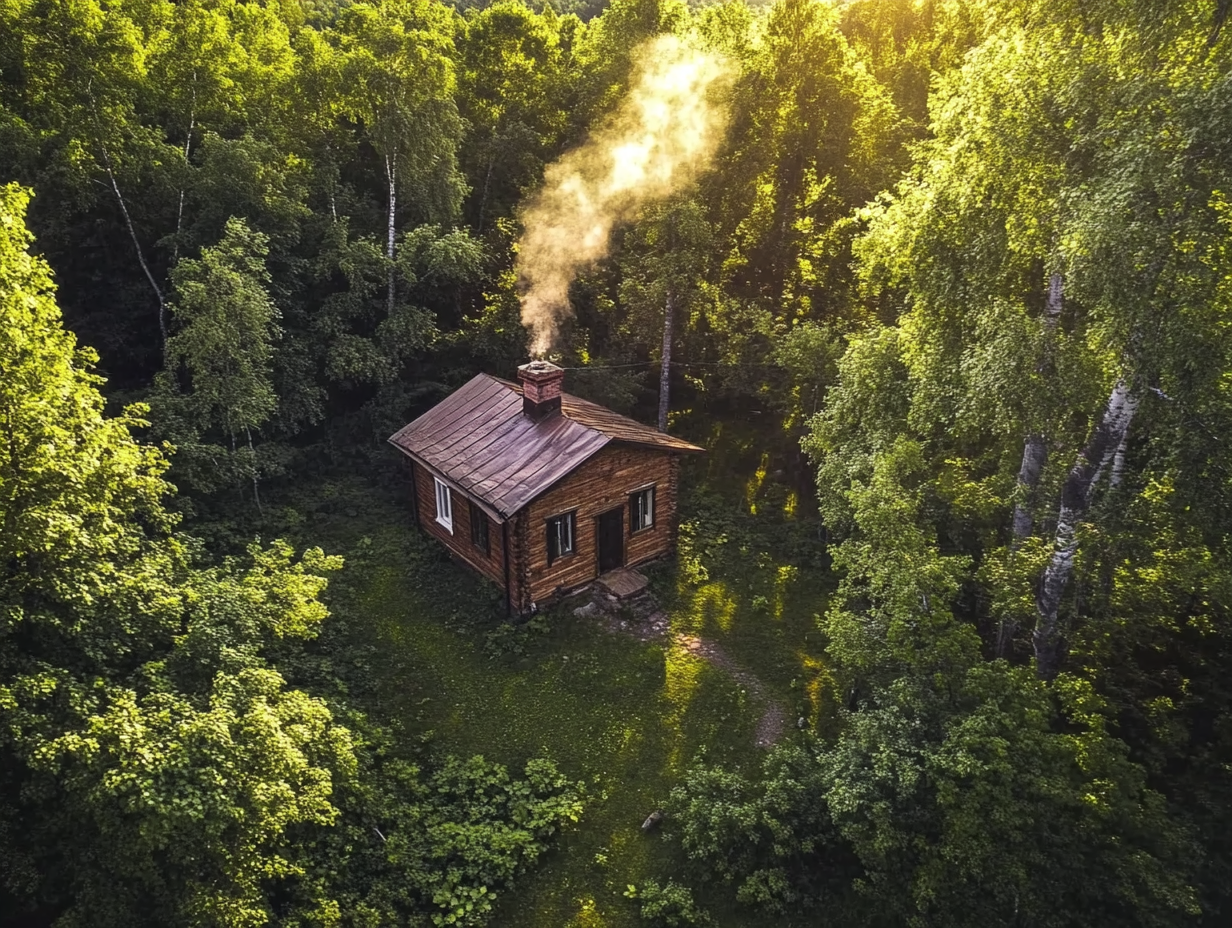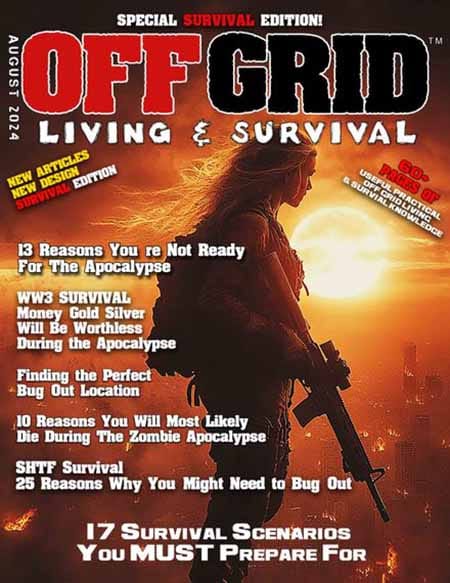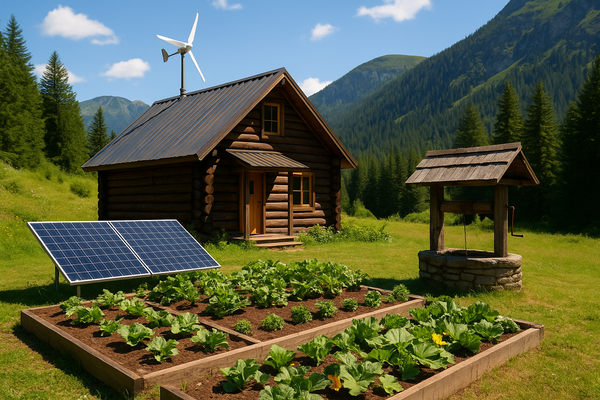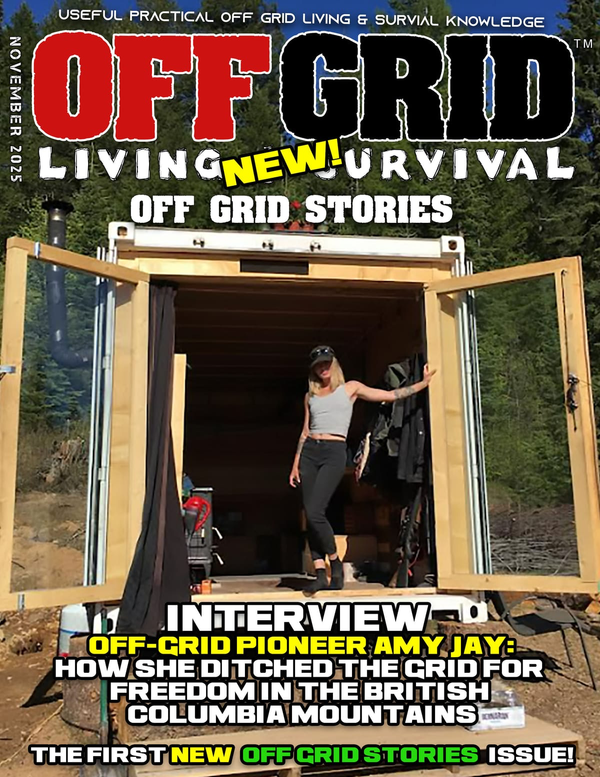20 examples of government overreach and restrictive zoning

20 examples of government overreach and restrictive zoning or land use laws that can make off-grid living unnecessarily difficult, frustrating, and expensive:
- Mandatory Utility Hookups: In some areas, you're required by law to connect to public utilities like water, electricity, or sewage systems—even if you don’t need or want them. This forces you to pay for costly hookups, even if you're trying to live self-sufficiently with solar power or rainwater collection.
- Prohibitions on Off-Grid Energy: Some zoning laws outright ban alternative energy setups like solar panels, wind turbines, or hydroelectric systems. Even if you have the resources, you may not be allowed to produce your own energy.
- Sewage and Septic Restrictions: Many counties demand that you connect to the local sewage system, even if you have a composting toilet or an advanced septic setup. They may refuse to issue building permits until you comply with their preferred sewage solution, which can be thousands of dollars in unnecessary expenses.
- Tiny House Bans: Tiny homes are a great way to live simply, but many places ban them because they don’t meet minimum square footage requirements. Zoning laws often enforce these outdated rules without considering modern sustainability and minimalism movements.
- Camping on Your Own Land: Believe it or not, in many places, you’re not allowed to camp on your own property for extended periods. You could get fined for trying to live in an RV or even a tent while building a permanent structure.
- Prohibited Natural Building Materials: Want to build your home from cob, straw bales, or other natural materials? Some zoning regulations don’t allow it, citing outdated or arbitrary health and safety standards, pushing you to use conventional and more expensive materials.
- High Permit Fees: In some jurisdictions, the cost of permits to build anything can be sky-high. Whether it's a tiny cabin or a simple outhouse, the fees can add thousands of dollars to your project before you even break ground.
- Setback Requirements: These rules dictate how far back from the property line or road your structures must be, often leaving you with limited usable space. Setbacks can make it impossible to build where you want, even if the land is perfect for off-grid living.
- Overly Large Minimum Lot Sizes: In some areas, you can’t legally build on land unless it’s a certain size—sometimes several acres. This can force people who want to live simply and on small plots of land into purchasing much more property than they need.
- Excessive Fines for Non-Compliance: If you decide to move forward without a permit or in violation of one of these rules, you could face steep fines. In some cases, local governments have even demolished people’s homes built without permits.
- Limited Access to Rainwater: Believe it or not, in some places, it’s illegal to collect rainwater. Governments claim to own all water resources, so collecting and using your own rainwater for household purposes can lead to fines.
- Prohibitions on Composting Toilets: In many counties, composting toilets are either heavily restricted or outright banned. They may not be allowed even though they are eco-friendly and effective, pushing you to install a septic system or connect to sewage instead.
- Forced Grid Connection for New Builds: Even if you’re building a home intended to be off-grid, some areas require you to connect to the electric grid as part of the permitting process. This is often true even if you plan to use 100% renewable energy from the start.
- Barriers to Living in an RV: If you think you can bypass zoning restrictions by living in an RV or camper, think again. Many municipalities limit how long you can stay in an RV on your own property, treating it like temporary camping instead of a legitimate housing option.
- Outlawing Alternative Housing: Yurts, domes, earthships, and other creative housing solutions are often illegal in traditional residential zones. These restrictions can stop you from building the kind of home that works best for your off-grid lifestyle.
- Overpriced Utility Hookups: When you’re forced to connect to utilities, the price for hooking up can be shockingly high. Running water or electricity lines to remote areas can cost tens of thousands of dollars, pricing many people out of living off-grid.
- Zoning Laws Prohibiting Multiple Dwellings: Many local governments only allow one home per parcel of land, which can be frustrating if you want to build additional small dwellings for family or friends. Some people want to share their land but are legally restricted from doing so.
- Obstacles to Self-Sustaining Agriculture: Some zoning laws limit the types of farming and gardening you can do on your own property. For example, some areas don’t allow you to raise chickens or other livestock, even if your property is large enough and rural.
- Rigid Building Codes: Building codes often demand expensive, unnecessary modifications or materials to meet certain standards. This can include things like requiring specific insulation or plumbing setups that don’t suit off-grid living but are standard in modern suburban homes.
- Prohibited Off-Grid Water Systems: Whether it’s wells or natural springs, local ordinances may not allow you to use alternative water sources, pushing you to connect to the public water supply, even if you have a perfectly viable and sustainable water option on your land.
These are just some of the challenges that make off-grid living difficult. The biggest frustration often stems from outdated or one-size-fits-all rules that fail to accommodate the needs of people who want to live sustainably and simply. The freedom to live independently should be a basic right, but government overreach and restrictive zoning laws often stand in the way.
Barriers to Affordable Housing
Overly restrictive zoning laws make it nearly impossible for poor and working-class individuals to build affordable homes. Whether it’s minimum square footage requirements or prohibitions on tiny homes, these regulations force people to buy more land or build larger, more expensive homes than they need. This drives up costs and can make homeownership unattainable for those living paycheck to paycheck.
It’s a huge blow to the American dream of owning a home, which is often one of the key paths to building generational wealth.
Forced Utility Hookups Increase Financial Burden
In many areas, you are required to connect to public utilities, even if you’re fully capable of living off-grid with solar, wind, or other self-sustaining systems. For someone trying to build a modest home on a small budget, the cost of these hookups can be prohibitive—sometimes tens of thousands of dollars. Forcing people to spend money on utilities they don’t need or want disproportionately impacts the poor and working class, leaving them with little choice but to take on debt or give up on homeownership altogether.
Loss of Freedom in Using Private Property
When zoning laws dictate how you can use your own land, they infringe on your basic rights to private property. If you can’t build a cabin, park an RV, or even camp on your own land, what’s the point of owning it? For people with limited financial resources, land ownership is a critical step toward self-sufficiency, but when the government restricts your ability to use that land the way you see fit, it undermines your ability to pursue happiness and live on your own terms.
High Permit Fees Price Out the Working Class
Even if you’re able to afford land, the high cost of permits for basic structures can be an overwhelming barrier. Poor and working-class individuals are hit hardest by these fees, which can add thousands of dollars to the cost of building even a small, simple home. This effectively pushes land ownership and homebuilding out of reach for many, trapping them in expensive rental markets or substandard housing situations.
Denial of Alternative Housing Solutions
Many affordable and sustainable housing solutions, like tiny homes, yurts, or earthships, are outright banned in certain zones. These homes are often far more affordable to build and maintain, but zoning laws don’t allow them because they don’t conform to traditional housing codes. This strips away opportunities for low-income families to achieve homeownership, forcing them to live in less sustainable or less affordable situations that don’t suit their needs or goals.
Restrictions on Self-Sufficiency
One of the biggest draws of off-grid living is the potential for self-sufficiency, but restrictive laws make that nearly impossible for many. For example, restrictions on composting toilets, rainwater collection, and alternative energy systems force people to depend on costly public services, which can be a massive financial burden on the poor. These laws limit the ability to reduce monthly living expenses, keeping low-income families trapped in a cycle of debt or financial instability.
Discriminatory Minimum Lot Sizes
Minimum lot size requirements prevent poor and working-class people from buying smaller, more affordable plots of land. These zoning laws essentially force them to buy more land than they need, driving up prices and making it impossible for many to afford even a small piece of property. It’s a significant barrier to land ownership, especially in rural areas where large tracts of land are the norm, leaving those with fewer financial resources out of the market altogether.
Displacement and Homelessness
For those who want to live in non-traditional housing—like RVs or tiny homes—many local governments don’t allow it, even on privately owned land. This creates a situation where poor or working-class individuals are fined or forced to move, essentially making them homeless because their chosen form of housing isn’t legally recognized. It strips people of the ability to create affordable living situations for themselves and leaves them at the mercy of an increasingly unaffordable housing market.
Limiting Agricultural Independence
Zoning restrictions that ban raising livestock or growing substantial gardens on residential property further harm low-income families who want to become more self-sufficient. For many, the ability to grow their own food is essential for reducing living costs and achieving a degree of food security. When local governments prevent people from using their land for basic agriculture, they’re denying them a chance to cut their grocery bills and become less dependent on external systems.
Violations of Constitutional Rights
At its core, many of these restrictive zoning and land use laws infringe on the constitutional right to pursue happiness and own property. When poor and working-class people are barred from building affordable homes, using alternative energy, or living on their own land in the way they choose, their rights are being curtailed. These laws often serve the interests of wealthier individuals or developers, while trampling on the dreams and freedoms of those trying to break free from financial hardship and create a better life for themselves.
Ultimately, these restrictions make it harder for people to achieve the financial freedom, self-sufficiency, and independence that land ownership and off-grid living should provide. They place undue burdens on those who are already struggling and infringe on their basic rights to live how they choose on the land they’ve worked hard to own.





